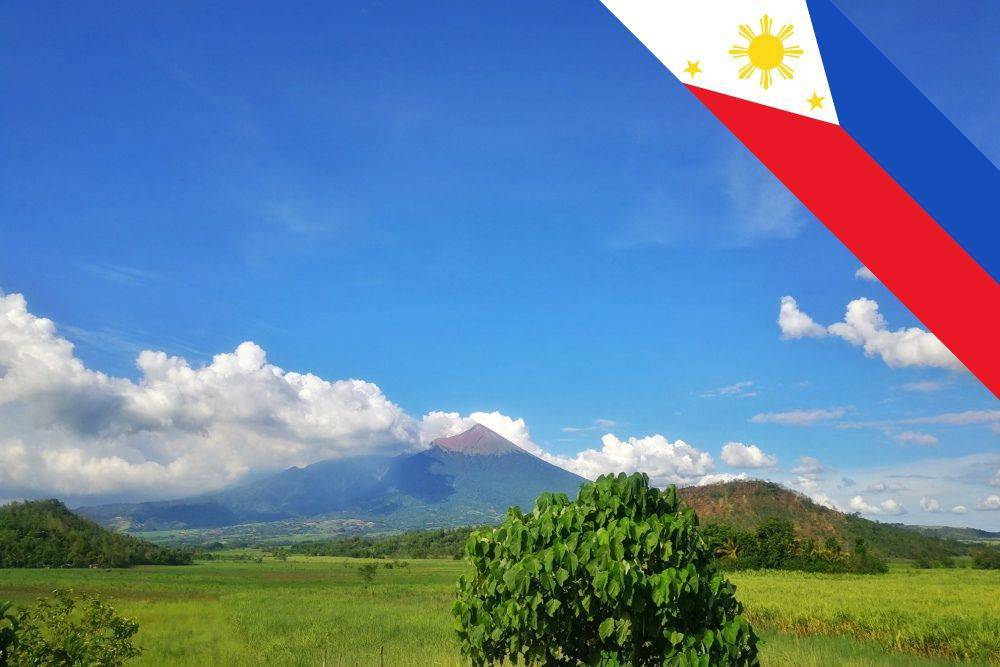The Philippine Institute of Volcanology and Seismology (PHIVOLCS) remains vigilant as it monitors the activity of Kanlaon Volcano, situated in the province of Negros Occidental.
Recent observations suggest increased volcanic activity, prompting consideration of raising the alert level from its current status to level 3.
Understanding Kanlaon Volcano
Kanlaon Volcano, also known as Mount Kanlaon, is one of the most active volcanoes in the Philippines, with a history of frequent eruptions. It is located on the island of Negros. The volcano towers over the surrounding landscape at an elevation of approximately 2,465 meters (8,087 feet). The volcano’s proximity to populated areas underscores the importance of continuous monitoring and assessment of its volcanic activity to mitigate potential risks to communities residing in its vicinity.
Signs of Increased Activity
PHIVOLCS has detected signs of heightened volcanic unrest at Kanlaon Volcano, including increased seismic activity and steam emissions. These indicators suggest the movement of magma beneath the volcano’s surface, raising concerns about the potential for a volcanic eruption. The decision to consider raising the alert level reflects PHIVOLCS’ commitment to proactive risk management and public safety. It aims to provide timely warnings and guidance to local authorities and communities potentially affected by volcanic hazards.
Implications of Alert Level 3
Raising the alert level to level 3 signifies an increase in volcanic unrest. It also indicates the likelihood of a hazardous eruption in the near future. Under alert level 3, PHIVOLCS advises the evacuation of communities within the danger zone surrounding Kanlaon Volcano. This is typically defined based on the volcano’s potential hazards, including pyroclastic flows, lahars, and volcanic ashfall. Additionally, access to the volcano’s summit area may be restricted to ensure the safety of both residents and visitors.
Potential Risks
Volcanic eruptions pose various risks to surrounding communities, including the threat of ashfall, lahars (mudflows), pyroclastic flows, and volcanic gases. Ashfall can disrupt transportation, damage infrastructure, and pose health hazards, particularly to respiratory health.
There are several health-related concerns that may arise during a volcanic eruption. For example, ashfall can aggravate respiratory conditions such as asthma, and may also cause respiratory irritation in healthy individuals. The disruption of infrastructure and services may also increase the risk of infectious disease outbreaks, particularly in areas where access to healthcare is limited. Mental health concerns such as anxiety, depression, and post-traumatic stress disorder (PTSD) may also arise due to the stress and uncertainty associated with a volcanic eruption. Furthermore, the release of toxic gases into the atmosphere can pose a risk to environmental health and potentially cause long-term health problems.
Preparedness Measures
Therefore, to prepare for potential risks and health-related concerns, local authorities and communities must remain vigilant and prepared to implement emergency response plans. This includes identifying evacuation routes and shelters and stockpiling emergency supplies such as food, water, and medical supplies. It is also important to conduct drills to familiarise residents with evacuation procedures and collaborate with government agencies and other stakeholders to ensure a coordinated response.
Additionally, public education is crucial to inform the public about the risks associated with volcanic activity and the steps they can take to prepare for and respond to an emergency. By taking proactive steps to prepare for potential risks and health-related concerns, communities can minimise the impact of a volcanic eruption and ensure the safety and well-being of affected populations.
Prioritising Safety and Preparedness
As PHIVOLCS continues to monitor Kanlaon Volcano’s activity, it underscores the importance of proactive risk management and community preparedness in mitigating the potential impacts of volcanic eruptions. Heightened awareness, timely communication, and collaborative efforts are essential in safeguarding the lives and livelihoods of those living in volcanic hazard zones. By prioritising safety and preparedness, it will ensure the well-being of communities vulnerable to disasters.
Have a pressing question for a doctor? Medical Channel Asia has launched a community forum page where you can get questions answered by a medical specialist. Visit the community forum here.

